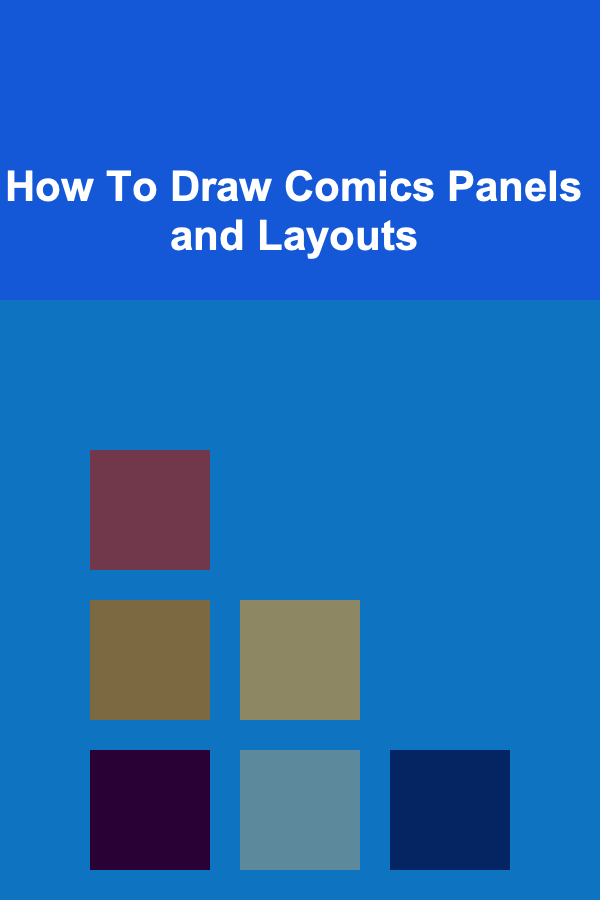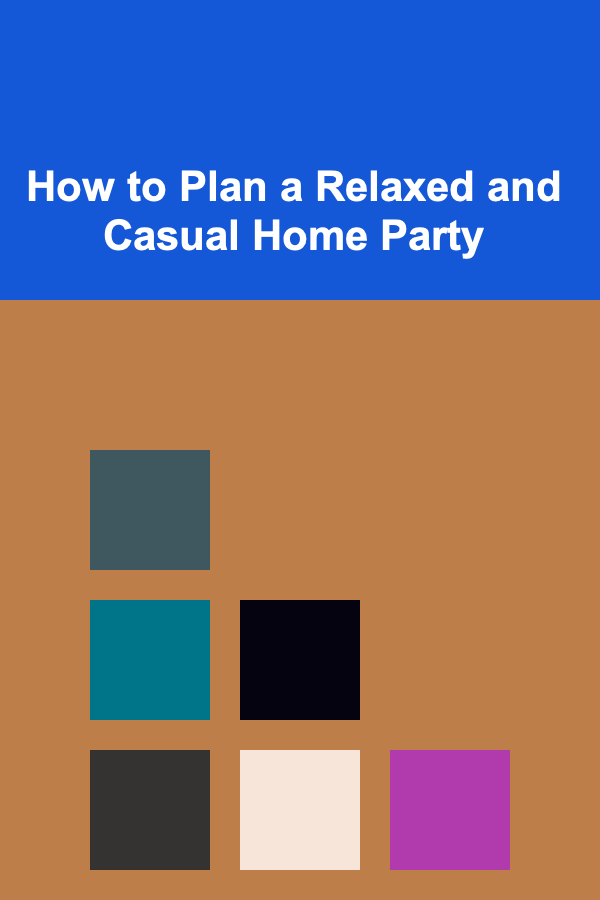
How To Draw Comics Panels and Layouts
ebook include PDF & Audio bundle (Micro Guide)
$12.99$6.99
Limited Time Offer! Order within the next:

Creating a comic involves more than just drawing characters and scenes. A crucial element of comic art is the design of the panels and their layouts. The way in which panels are arranged on a page can significantly affect the pacing, mood, and overall storytelling. The composition of comic panels determines how the reader experiences the narrative, from the timing of the action to the emotional impact of the scene. In this article, we will explore the essential concepts and techniques behind drawing comic panels and layouts. By understanding these principles, you can enhance your storytelling and create more dynamic and engaging comics.
The Role of Comic Panels in Storytelling
Comic panels serve as the building blocks of a comic page. They contain the artwork, dialogue, and actions that convey the story. However, their significance goes beyond just holding these elements. The panel layout and size dictate how readers engage with the story, influencing their pace of reading and the intensity of the emotions conveyed. Each panel holds a piece of the narrative puzzle, and the arrangement of these panels on the page is key to guiding the reader's journey through the story.
1. Pacing and Rhythm
The pacing of a comic is influenced heavily by the size, number, and arrangement of panels. Larger panels often signal moments of great significance or action, while smaller panels may depict fleeting moments or build tension. The rhythm of a comic refers to how fast or slow the story progresses based on the panel design.
- Wide panels or full-page spreads can slow down the pacing and emphasize dramatic moments.
- Tight, cramped panels with fewer details can speed up the action and create a sense of urgency.
By manipulating the size and arrangement of panels, the artist can control the pacing and rhythm, influencing how the audience perceives the flow of time and events.
2. Framing and Focus
Panels also serve as a framing device. The boundaries of the panel create a space within which the action takes place, and this framing affects how the viewer interprets the scene. The artist has the power to emphasize certain aspects of the scene by altering the size and position of the panel or the angle at which the viewer is observing the action.
- Close-ups can highlight a character's emotions, offering a sense of intimacy and personal connection.
- Wide shots or establishing shots can provide context for the scene, showing the setting or the characters in relation to their environment.
Choosing the right framing is essential to guiding the reader's attention and reinforcing the emotional tone of the scene.
Basic Principles of Comic Panel Design
Before diving into the specifics of panel layouts, it's important to understand the core principles of comic panel design. These principles help you make intentional decisions about how to compose each panel to serve the story effectively.
1. The Rule of Thirds
The rule of thirds is a widely used principle in visual composition. It suggests dividing the panel into three equal horizontal and vertical sections. The focal points of the scene should be placed along these lines or at their intersections. This creates a more dynamic and visually appealing composition, preventing the artwork from feeling too static or predictable.
In comics, applying the rule of thirds to your panel design can help guide the reader's eye across the page and maintain a balanced composition. The placement of characters, objects, and speech bubbles can follow this rule to lead the reader through the panel naturally.
2. The Golden Ratio
The golden ratio, a mathematical principle often found in nature and art, can also be applied to comic panels. This ratio divides a panel into sections where the ratio between the parts is approximately 1.618:1. It creates a harmonious and pleasing visual flow, leading the reader's eye through the page without distraction.
While the golden ratio is more subtle than the rule of thirds, it is still effective in ensuring that the composition of the panel feels balanced and aesthetically satisfying. Using the golden ratio in panel design can subtly guide the reader's gaze, creating a natural flow through the scene.
3. Leading Lines
Leading lines are visual elements within the artwork that direct the viewer's eye in a particular direction. These lines can be anything from a road, a character's line of sight, or the natural flow of the background. In comics, leading lines are particularly useful for guiding the reader's eye from one panel to another or from one point of focus to another within the panel.
By consciously incorporating leading lines into your panel compositions, you can control the reader's attention and make transitions between scenes smoother. This is especially important in action sequences or when switching between different perspectives.
4. Negative Space
Negative space refers to the empty areas surrounding and between objects in a composition. While it might seem counterintuitive, negative space is a powerful tool in comic panel design. It helps create balance, gives the viewer's eye a place to rest, and can even convey meaning.
By using negative space effectively, you can emphasize particular aspects of the scene. For instance, leaving a large amount of empty space around a character can convey isolation or loneliness. Similarly, you can use negative space to make a small detail stand out by giving it more breathing room.
Types of Comic Panel Layouts
Now that we understand the basic principles of panel design, it's time to explore various comic panel layouts. Different layouts serve different narrative purposes, and selecting the right one for a particular scene is essential to achieving the desired storytelling effect.
1. Grid Layout
The grid layout is one of the most common and traditional approaches to panel organization. It typically involves evenly spaced panels arranged in rows and columns, creating a predictable, regular rhythm for the reader.
- Benefits: The grid layout is ideal for storytelling that requires a steady pace, such as dialogue-heavy scenes or sequences with a lot of character interaction.
- Drawbacks: While reliable, a rigid grid layout can sometimes feel too static or predictable, especially for action-heavy or emotionally intense scenes.
Incorporating variations within the grid, such as altering panel sizes or breaking the pattern occasionally, can help keep the layout dynamic and interesting.
2. Irregular Layout
An irregular panel layout is more fluid and less structured than the grid. It involves varying panel sizes and shapes, creating a more dynamic and visually striking composition.
- Benefits: Irregular layouts can enhance the storytelling by making the pacing more dramatic or highlighting important moments. They are especially effective for action sequences or moments of high emotional intensity.
- Drawbacks: The lack of structure can sometimes be challenging for readers to follow, particularly if the layout becomes too chaotic or confusing.
Using irregular layouts strategically can create a sense of unpredictability, keeping the reader engaged. However, it's important to ensure that the flow of the story is still clear, even in a more unconventional layout.
3. Dynamic or Action-Oriented Layout
When depicting action scenes or intense moments, dynamic panel layouts are often used. These layouts feature dramatic angles, overlapping panels, and sometimes even panels that break out of the borders of the page.
- Benefits: Dynamic layouts help convey the speed, energy, and excitement of the action. Overlapping panels or tilted angles can make the action feel more fluid and immediate.
- Drawbacks: While effective for conveying motion and emotion, dynamic layouts require careful consideration to avoid overwhelming the reader. Too many overlapping panels or tilted angles can disrupt the flow and confuse the audience.
In action sequences, dynamic layouts can enhance the intensity and keep the reader immersed in the moment, but it's important to balance the visual chaos with clarity.
4. Full-Page Spread
A full-page spread is a layout in which a single image spans an entire page. This layout is typically reserved for pivotal moments in the story, such as dramatic revelations, important battles, or visually striking scenes.
- Benefits: Full-page spreads can give the artist a chance to create a stunning visual that emphasizes the significance of the moment. They offer room for intricate detail and visual impact.
- Drawbacks: Full-page spreads are often used sparingly, as they can interrupt the flow of the narrative. If overused, they may lose their impact and make the story feel slower.
Using full-page spreads strategically can heighten the emotional impact of key moments in the story, making them feel grand and memorable.
Advanced Techniques for Comic Layouts
Once you have a solid understanding of basic panel layouts, you can experiment with more advanced techniques to further elevate your storytelling.
1. Bleeding the Panels
Panel bleeding involves having the artwork extend beyond the edges of the panel borders, creating a seamless transition between the panel and the rest of the page. This technique can be used to create a sense of immersion or to make the scene feel more intense.
- Example: A character running at full speed might have a panel that bleeds out of the frame to convey the motion and energy of the action.
Panel bleeding can help make the artwork feel more expansive, making the reader feel more involved in the action.
2. Asymmetry
Asymmetrical panel layouts involve using uneven panel sizes or placing panels at odd angles. This can create a sense of imbalance, emphasizing moments of tension, chaos, or uncertainty.
- Example: If a character is in a state of confusion or fear, you might use asymmetrical panels to visually communicate their inner turmoil.
Asymmetry can be an effective tool for conveying emotions and psychological states, adding a layer of depth to the storytelling.
3. Visual Metaphors and Symbolism
Comics offer a unique opportunity to use visual metaphors to communicate abstract ideas or themes. By manipulating panel design, you can visually represent emotions, concepts, or themes that are central to the story.
- Example: A character's descent into darkness might be symbolized by panels that gradually become darker or more cramped, conveying a sense of entrapment or despair.
Using visual metaphors can add richness to your comic and make it more thematically resonant.
Conclusion
Drawing comic panels and layouts is a vital skill that combines artistry with storytelling. The arrangement of panels, their size, shape, and the way they interact with each other, all serve to control the pace, focus, and emotional impact of the story. By understanding the principles of panel design, such as pacing, framing, and composition, as well as experimenting with different layouts, you can create comics that not only tell compelling stories but also engage readers on a visual and emotional level.
Whether you are working with a traditional grid layout, an irregular pattern, or more dynamic designs, the goal is always the same: to guide the reader through the narrative in a way that is clear, engaging, and visually stimulating. With practice, your understanding of comic panel layouts will deepen, and you will be able to use this knowledge to enhance your storytelling and create more powerful and impactful comics.

How to Create a Comprehensive Emergency Preparedness Checklist for Your Home
Read More
How to Plan a Relaxed and Casual Home Party
Read More
How to Prepare for Cold Weather Expeditions
Read More
How to Use Your Home Budget to Achieve Financial Freedom
Read More
The Environmental Consultant's Playbook: Navigating Challenges in Sustainability
Read MoreHow to Plan a Fitness Challenge with a Printable Tracker
Read MoreOther Products

How to Create a Comprehensive Emergency Preparedness Checklist for Your Home
Read More
How to Plan a Relaxed and Casual Home Party
Read More
How to Prepare for Cold Weather Expeditions
Read More
How to Use Your Home Budget to Achieve Financial Freedom
Read More